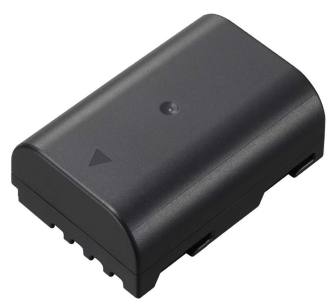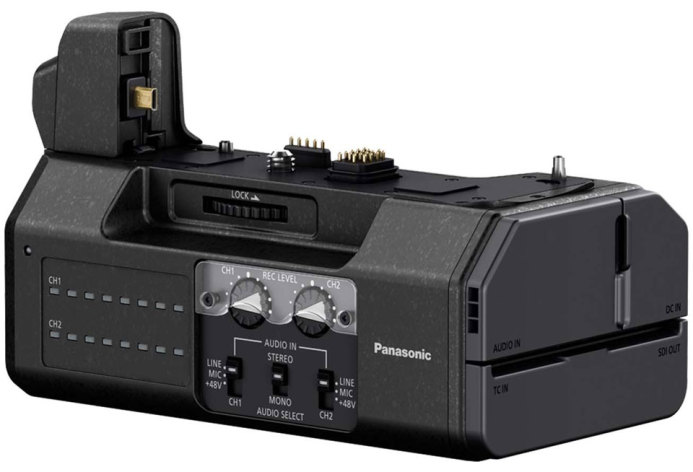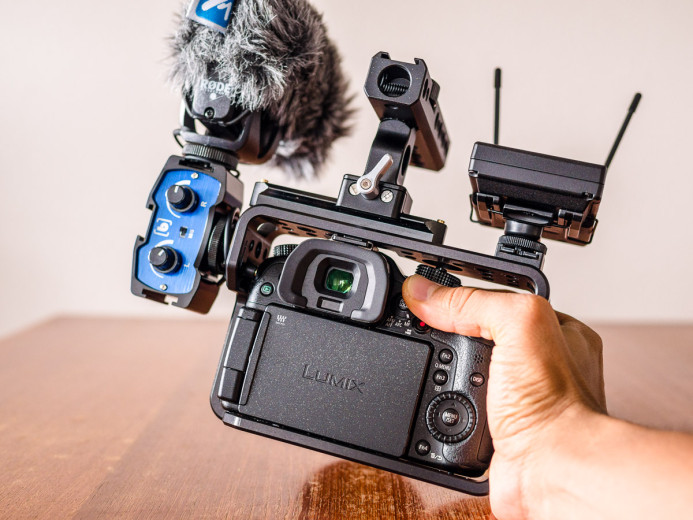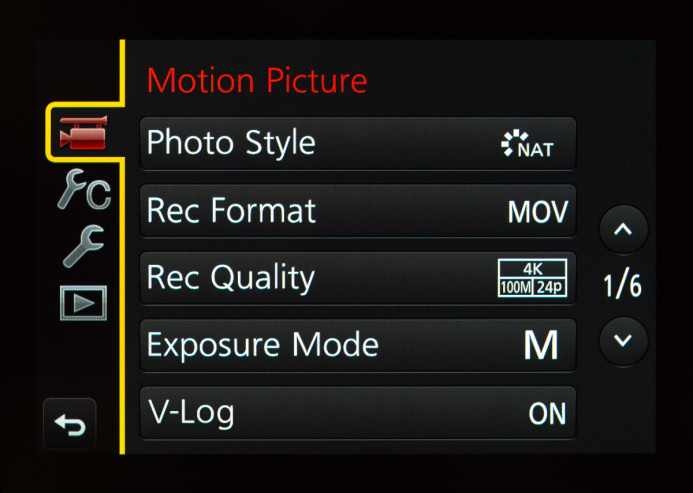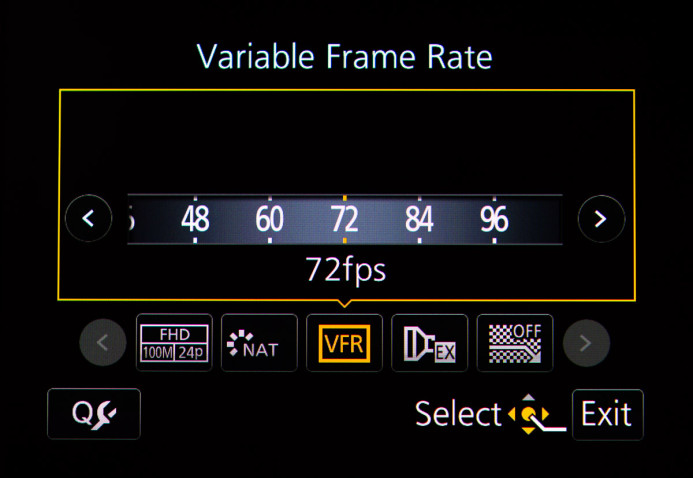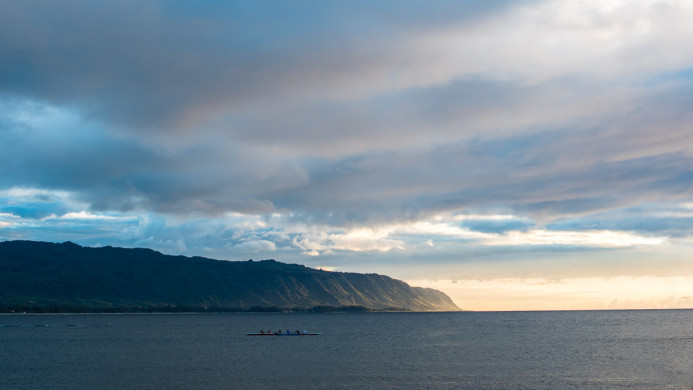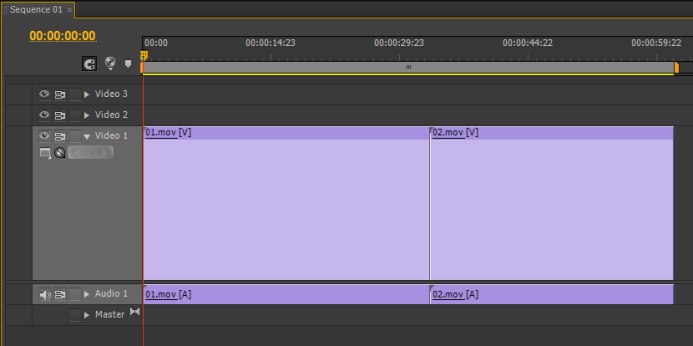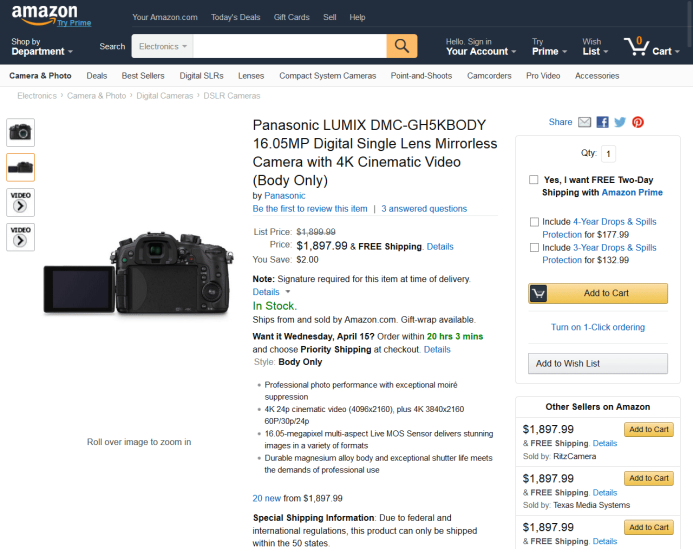The Panasonic GH5 is Here
What if Panasonic did the impossible and announced the GH5 at the NAB conference this year?
Here’s a glimpse into what that might have looked like…
Panasonic started off this year’s NAB with bang– the Panasonic GH5 is here.
Let’s dig into the details and take a look at the GH5’s new features and functionality.
Note: Just so there’s no confusion, the GH5 was not announced at NAB 2015. This is a wish list of features that we would love to see when Panasonic ultimately releases the GH5, though other camera manufacturers are welcome to take these suggestions and run with them as well (#SamsungNX2) :)
Full Compatibility with GH4 Accessories
New camera models are always a scary prospect, but Panasonic has done the right thing with the GH5 by keeping the same form factor as the GH4.
This means that all official accessories for the GH4, such as batteries, microphones, and the YAGH interface unit are all fully compatible with the GH5.
As the GH5 is virtually indistinguishable from the GH4, it also means that third-party accessories like cages and other components custom-designed for the GH4 should be fully compatible with the GH5.
I’ve tested several GH4-specific cages with the GH5, and they were all fully compatible.
Bottom line: Your investment in GH4-specific accessories is safe. The GH5 has the same form factor as the GH4.
V-Log is a Go
Panasonic demoed V-log on the GH4 at a few trade shows last year, but it turns out that was just to gauge interest and get feedback from users.
Sorry guys, the GH4 will not get V-log.
This isn’t the first time we’ve seen this sort of thing happen– focus peaking was a big request for the GH3, but it was only made available on the GH4.
Similarly, while we would love to see it added to the GH4, V-log is exclusive to the GH5. An engineer told me that V-log was only possible thanks to the GH5’s upgraded hardware.
The good news is that V-log is awesome. What’s more, the picture profile Panasonic has been demoing at trade shows is actually only part of a larger mode that completely transforms the GH5.
When you activate V-log mode on the GH5, a host of new options are enabled:
- Color Depth: 4:2:2 12-bit color
- Output: 4K at 250mbps (uncompressed raw via the YAGH’s SDI outputs)
- Recording Modes: 4K (UHD) at up to 60P
- Picture Style: V-log only (no other profiles are accessible)
V-log is intended for users that want to capture the highest quality footage possible for the most flexibility during post-production. As such, V-log unlocks new capabilities, but it also applies some limits to how you can use the camera.
For example, the V-log’s picture style is the only available picture style in this mode (no Natural, Standard, Cine-D, etc.), which means that you will need to be familiar with using LUTs to grade the image in post.
V-log also saves footage at a much higher 250mbps bitrate to retain as much image data as possible. It’s not raw, but it’s pretty darn good. However, this data rate exceeds the minimum data rate of U3 cards, so you’ll need to make sure you use high-quality SDXC cards when shooting in V-log.
Panasonic will have a list of recommended memory cards soon, but I didn’t have any issues with the Transcend 64GB U3 SDXC cards when testing pre-production GH5 units.
Panasonic will also be providing a custom LUT as a starting point for the GH5’s particular log profile. It should be available for download sometime in the next few days, before the end of NAB.
Bottom line: V-log allows you to capture the highest possible image quality with the GH5, but it comes with a more involved post-production workflow.
4K + 60P
Cinema 4K on the GH5 is obviously still locked at 24P, but you can now shoot at frame rates at up to 60P when shooting UHD in NTSC (up to 50P in PAL).
Once again, this is thanks to the GH5’s upgraded hardware that allows for faster processing of 4K footage. However, it appears that even the GH5’s faster components can’t do everything at once, as 60P recording is only available when shooting V-log. Presumably, this is because V-log does not have to process the image as much so it can dedicate more resources to handling higher frame rates.
VFR Reloaded: 4K Slow Motion up to 120fps
The GH4’s VFR (Variable Frame Rate) mode is a nice feature that makes it easy to capture smooth slow-motion footage. Unfortunately, while VFR provided a wide range of frame rates to select from, image quality suffered when shooting at frame rates higher than 60fps.
The GH5 raises the bar in several ways to make VFR an even more powerful tool for shooters.
First, all footage is now processed in 4K thanks to the GH5’s faster hardware. This higher-resolution processing means that image quality is maintained across the entire range of frame rates. An engineer told me that the the GH5 could have supported even higher frame rates, but Panasonic decided to limit the frame rates and focused on making sure they’re all usable instead.
Still, the GH5 does get a nice little bump with a maximum frame rate of 120fps when shooting VFR. It might seem like just an incremental change, but considering that 120fps is now as sharp as 60fps on the GH5, I’d say it’s a huge improvement.
Of course, the other benefit of 4K processing is that VFR is now supported when shooting 4K in addition to HD resolutions. This makes the GH5 a compact camera capable of capturing buttery-smooth slow motion 4K footage.
In addition to the faster hardware, the GH5 also features a larger buffer for capturing footage at high frame rates, rather than depending on the memory card’s speed. The buffer also allows the GH5 to maintain higher image quality as it can take the time to intelligently use the available bitrate when saving each frame.
However, the GH5’s larger buffer still has its limits, which means that recording will stop when it is filled. When using a fast card, you can shoot continuously at up to 60fps, but higher frame rates will likely fill the buffer faster than the footage can be offloaded to the memory card.
For example, you are limited to 10 second bursts when shooting at 120fps. This might not sound like much, but at 5x slower than real time, you still end up with nearly a full minute of slow motion footage.
Bottom line: VFR on the GH5 comes with some new limitations, but the improvements to image quality, higher frame rates, and 4K resolution far outweigh any downsides.
The Return of the Multi-Aspect Sensor
The GH2 featured a multi-aspect sensor that provided a wider FOV when shooting video (16:9 aspect ratio), but was abandoned when a new sensor was designed for the GH3.
Now the multi-aspect sensor makes a comeback with the GH5, and it’s better than ever.
Essentially, the GH5 has an oversized sensor that provides a wider FOV when shooting video. This cuts down on the crop factor, allowing you to use more of a lens’ image circle to fit more of a scene into the frame.
The multi-aspect sensor also reduces the GH5’s crop factor when shooting 4K. In fact, thanks to the new way pixels on the sensor are mapped and processed, you actually get a wider FOV when shooting 4K, compared to HD.
When shooting HD, the crop factor is 2x, but in 4K, the crop factor is 1.89x. It’s a small difference, but a welcome one.
Bottom line: The GH5’s multi-aspect sensor delivers a wider FOV when shooting in 4K.
Clean Images up to 12,800 ISO
One of the biggest changes Panasonic made during the GH5’s development is their approach to ISO performance. This new approach results one of the cleanest images Panasonic has ever produced in a hybrid camera.
Most cameras have an optimized ISO range where the image noise remains relatively low. The camera will typically have several more steps of gain beyond this optimized range where noise increases dramatically to the point that it creates an image that’s basically unusable.
Instead of adding an impressive-sounding ISO range with big numbers, Panasonic decided to limit the ISO range. This allowed them to focus on optimizing the signal processing so that images would be as clean as possible within this limited range.
As a result, the GH5’s base ISO is 800 (a figure misattributed to the GH4 in an interview with one of Panasonic’s Japanese executives). Lowering the ISO below this point is possible, but image quality– especially shadow detail– may suffer. Using ND filters to achieve a proper exposure is recommended over dipping below the GH5’s native ISO.
The GH5 tops out at an ISO of 12,800, which is surprisingly clean. In fact, there is barely any difference in image noise between 800 and 12,800 on the GH5. It’s almost unbelievable.
Here are a couple frame grabs at ISO 800 and 12,800:
Bottom line: Panasonic limited the GH5’s ISO range to focus on creating images that are as noise-free as possible all the way up to 12,800 ISO.
Over 16 Stops of Dynamic Range
Dynamic range is also increased substantially on the GH5 compared to the GH4’s 12-ish stops of DR.
Panasonic claims the GH5 is capable of over 16 stops of dynamic range. Technically, that’s probably true, but I’d say the GH5 has closer 15 stops of usable dynamic range, which is still pretty awesome.
One of the best things about the GH5’s dynamic range is that it is optimized for highlights, with smooth roll-off even under conditions that would usually cause harsh clipping.
Large file size Support
This is a small change, but one I strongly encouraged Panasonic to consider due to the benefits it would have to data management and post-production workflows.
The GH5 supports files larger than 4GB.
The GH4 (and many other hybrid cameras) split long clips into multiple files that are limited to 4GB each. This was done to maintain compatibility with SD cards that are FAT32 formatted, and thus only support files up to 4GB in size.
The downside to this approach is that you have to string multiple files together just to add a single clip to the timeline. This is a cumbersome and error prone approach.
Thankfully, Panasonic listened to our feedback and added support for large files to the GH5 when using exFAT formatted SDXC memory cards. When a properly-formatted card is used, each clip is saved as a single file, making footage easier to manage and work with in post.
The flip side of this change is that you need to ensure that the hard drives you offload footage to are formatted to support large files as well, or you will run into problems.
The End of Recording Limits for EU Models
Panasonic is doubling-down on the GH-series cameras as a solution for filmmakers and video professionals. They are so committed to this that Panasonic has classified the GH5 as a video camera, rather than a stills camera.
This classification may seem like a small change, but it has big ramifications– namely, the GH5 is free from the 30 minute video recording limit imposed on stills cameras in Europe.
Bottom line: Now, any GH5 worldwide can record continuously until the memory card has been filled.
Price
With all the GH5’s new features and functionality, you’d expect a much higher price than the GH4.
However, the GH5 is only receiving a modest increase in price compared to the GH4– as announced at today’s (April 13, 2015) NAB press conference, the Panasonic GH5 costs $1899.
Panasonic also announced that the GH4’s price is now officially $1499. The GH4 has frequently been on sale at this price, but today’s announcement makes the lower price permanent. The GH4 is not being discontinued and will continue to be sold alongside the GH5, making it a great B-cam for your projects.
The GH5 Ships…Today
New product announcements at NAB are usually bittersweet– they are exciting to learn about, but the new products won’t actually be available for at least several months.
Not this time.
Panasonic wants to make a big splash with the GH5, so they’re not only announcing the camera at NAB, they’ve also coordinated with select vendors (see below) to begin shipping the GH5 starting today.
That’s right, no pre-orders or waiting lists here– as long as the GH5 is still in stock when you place your order (which likely won’t be long), your GH5 will be shipped out immediately.
Is the GH5 Right for You?
The new features and functionality of the GH5 may take some time to digest. It’s not often that a manufacturer delivers so heavily on user feedback, it almost feels like this is all just a dream.
Nonetheless, the GH5 is real and it is here, but is the GH5 the right camera for you?
In a nutshell, the GH5 is a major upgrade over the GH4. However, professional shooters who are familiar with more involved post-production workflows will benefit the most from the GH5’s new features like V-log.
If you are prepared for the additional processing required by this camera, then the GH5 should be a solid camera for several years to come.
I’ve only tested pre-production units up until now, so I’m excited to start shooting with a production-ready GH5. An in-depth review of the GH5 is coming soon. Sign up below to find out when the review and other resources are available.
***
I hope you enjoyed this GH5 wishlist, but just remember, there will always be new cameras on the horizon. Don’t wait around for new cameras, pick up the one you have and go shoot something today!
Related
- Panasonic GH4 — the GH5 will be announced one day, but for now, the GH4 is one of the best options out there.
- Transcend 64GB U3 SDXC Memory Card — A fast card for the GH4, with room to grow for the GH5 (hopefully).
More Resources
- Why You Should Be Excited About the Panasonic GH4
- Lens Options for the Panasonic GH4
- Memory Cards for the Panasonic GH4
- Rigging the Panasonic GH4
- Stabilizing the Panasonic GH4
- Getting the Best Audio from the Panasonic GH4
- Should you buy the YAGH for the Panasonic GH4?
- 6 Reasons Why DSLR Shooters Love the Panasonic GH4
